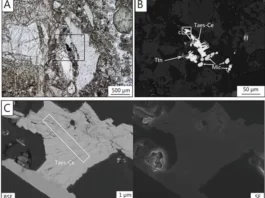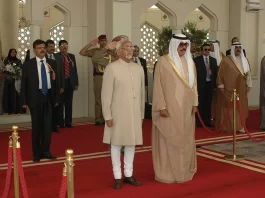Green Delta Dragon, a joint-venture asset manager established in Dhaka by Green Delta Insurance Company Ltd (“GDIC”), Dragon Capital Group (“Dragon Capital”), and Equinox Dhaka Ltd. (“Equinox”), asserts that Bangladesh is one of the most alluring markets globally for long-term investors due to its exceptionally low price-to-earnings ratios (P/E ratios) and a robust economic outlook.
According to the analysis conducted by the fund manager, the Bangladesh Dhaka Stock Exchange Broad Index DSEX:IND has an approximate P/E Ratio of 14.5; the principal stock markets of Thailand and India have P/E Ratios of 21.1 and 23.7, respectively. According to Green Delta Dragon, the PE Ratios of leading blue-chip Bangladesh equities are approaching all-time lows, suggesting they may be undervalued.
Green Delta Dragon introduced its inaugural open-ended mutual fund, the Enhanced Blue Chip Growth Fund (GDD EBCGF), earlier this year. The fund aims to surpass the performance of the benchmark DS30, which monitors the top-performing stocks listed on the Dhaka Stock Exchange, through strategic investments in Bangladesh-based companies that are market leaders. It explicitly targets capitalisations of Bangladeshi Taka 8.5 billion (equivalent to $79 million) or higher and invests in prospective market leaders’ initial public offerings (IPOs).
According to Green Delta Dragon’s Managing Director and Chief Executive Officer, Shahbaj Talat: Bangladesh’s capital market has substantial upside potential due to the country’s promising long-term economic development prospects and extremely favourable P/E ratios. Bangladesh’s robust economy and advantageous geographical position render it an up-and-coming investment destination. Boasting an expanding populace exceeding 170 million, a young demographic, and significant economic expansion, the nation offers an environment awash in prospects. Investors are drawn to this region due to its constant increase in foreign direct investment (FDI), dedication to infrastructure development, and expansion of industrialisation. Bangladesh is considered “the next Asian tiger” due to its progressive reforms, economic resilience, and emphasis on technology, RMG, and agriculture sectors. These factors collectively position Bangladesh as a potential economic powerhouse in the region. Moreover, Bangladesh is one of the most captivating long-term investment prospects globally.
The most compelling reasons why Bangladesh is an alluring investment destination are outlined below.
One of the fastest-growing economies in the world
Bangladesh, which has demonstrated consistent economic development over the past decade, is one of the world’s fastest-growing economies, with an average GDP growth rate of 6%. According to projections provided by the IMF, Bangladesh’s GDP growth is expected to remain 6% to 7% in the forthcoming years. It is anticipated that the main infrastructure projects in Dhaka and Chattagram, once fully operational, will substantially reduce the time and cost of conducting business, thereby accelerating the country’s GDP growth.
Exporter of second-largest ready-made garments (RMG)
With approximately 5 million direct jobs and an 84% contribution to the country’s total export revenues, the garment industry is a pillar of the Bangladesh economy. Approximately $47.0 billion worth of apparel products were exported by the nation in FY23, maintaining its position as the second largest exporter of RMGs worldwide, behind China.
Progressive demographic dividend and youth
Bangladesh has an impressive population of 170 million, of which approximately 60% are under 25. The current adult literacy rate is 74.4%, with women comprising an estimated 42.0% of the labour force. Notably, by 2022, the poverty rate will have decreased substantially from 48.9% in 2000 to below 18.7%. The advancements in healthcare, demographics, and poverty reduction support economic growth, cultivate innovation and bolster a robust labour force.
Consistent growth in global trade and investment
Bangladesh has witnessed a substantial upsurge in Foreign Direct Investment (FDI) during the previous decade. The gross foreign direct investment (FDI) inflow for the fiscal year 2011 was less than one billion dollars and has since multiplied by five to reach approximately $4.7 billion. Enhanced trade relations, particularly with the European Union and the United States, have additionally stimulated the expansion of exports, which has achieved double-digit growth on an annual basis. Bangladesh’s international commerce increased twice, from $60.9 billion in FY13 to $125.1 billion in FY23.
Stability and flexibility in the face of disasters
Despite frequent natural disasters and other adversities, Bangladesh has demonstrated remarkable resilience. Cyclone, flood, and other catastrophe early warning systems have been established nationwide. To reduce the vulnerability of communities, the nation has constructed 12,000 cyclone shelters, raised platforms and embankments in flood-prone regions, and conducted extensive awareness and preparedness campaigns, all of which are significant climate change adaptation initiatives.
Prompt modernisation of infrastructure
Bangladesh has made substantial infrastructure investments over the past decade, spending approximately $55 billion on transport and energy.
Adequate electricity supply to accommodate the expansion
Bangladesh has expanded its power generation capacity over the last fifteen years by constructing new power plants, modernising pre-existing infrastructure, and enhancing transmission networks. The nation’s overall power generation capacity significantly increased to 25,000 MW (70 per cent overcapacity) from 4,000 MW in 2008. The gradual decrease in dependence on petrol from 82% to 50% over time has underscored the strategic value of diversifying energy sources to reduce reliance on a single source. Private sector participation has been crucial to this prosperous expansion.
According to Shahbaj Talat: Bangladesh is nearing membership in the prestigious “half a trillion dollar” GDP society. The country has an MCAP/GDP ratio of 17%, given that the Market Capitalization (MCAP) of its leading exchange is approximately $71 billion and its GDP is $407 billion. In contrast, developed countries such as the United States, United Kingdom, Japan, and Singapore have MCAP/GDP ratios exceeding 120%, whereas notable developing countries like China, Indonesia, and Brazil have MCAP/GDP ratios ranging from 50% to 60%. The extreme contrast underscores the unexplored capacity of Bangladesh’s capital market and offers a substantial prospect for the capital market to expand substantially.






